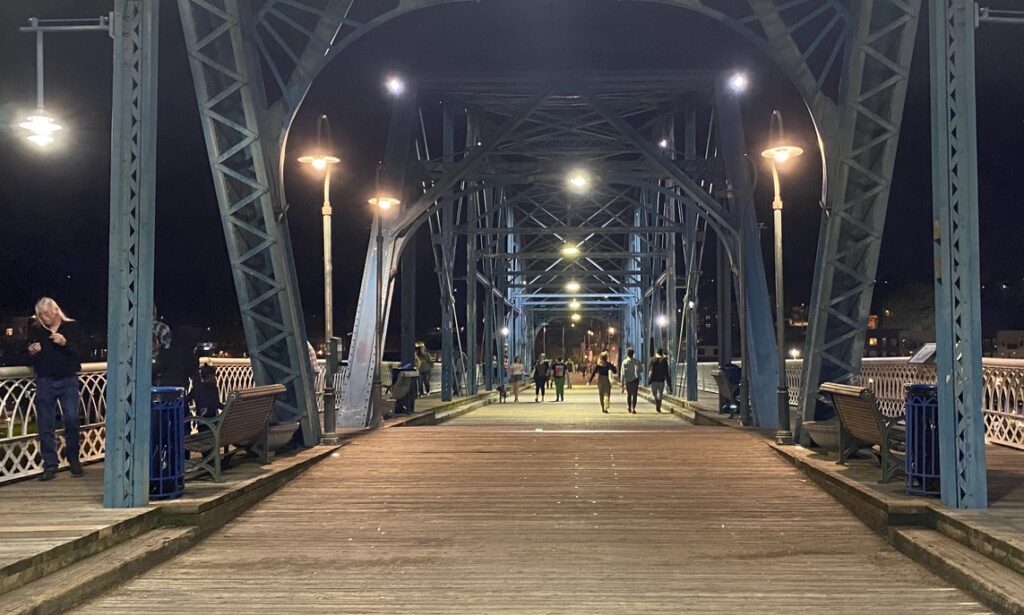The picturesque Walnut Street Pedestrian Bridge is the crown jewel of the “new” Chattanooga. On one end is North Shore where you can get good food and visit the park and the other end is downtown, right near the aquarium and multitudes of restaurants. It’s a perfect walk over and back and brings people together from all social economic backgrounds.
The wrought iron and steel truss bridge was erected in 1891 was closed to traffic in 1978 and sat dormant for many years, another reminder of the city’s decaying downtown.
The bridge provides glorious views of Chattanooga’s Ross Landing on the south shore and Coolidge Park on the trendy north shore


During the Civil War, Chattanooga was an important rail hub for the Confederates as well as manufacturing center for iron and coal. In Sept 1863, the Union Army executed a series of maneuvers on the Tennessee River that forced the Confederate soldiers to retreat.
Chattanooga, was once known as one of the dirtiest city in America. The air was polluted and the city was desolate and deteriorated. As part of the urban revitalization, city planners repurposed the bridge to bring the community back to Chattanooga’s urban core and along the riverfront.
But as the younger generation has embraced the bridge as a new playground, many older African Americans remember the bridge as a lynching ground where White mobs hung Black men from the bridge. In 1906, Ed Johnson was lynched here when he was falsely accused of raping a White woman. In 2000, a Hamilton County judge formally cleared Johnson of wrongdoing. Thankfully, Chattanooga is designing a memorial marking the spot where Johnson was killed.
Chattanooga has gone through a lot over the years. The Walnut Street Bridge has emerged as a vibrant, and dynamic symbol of the spirit of Chattanooga connecting it’s revitalized riverfront with the exciting North Shore with the Tennessee Aquarium, the Hunter Museum of American Art, and the Tennessee Riverwalk.
